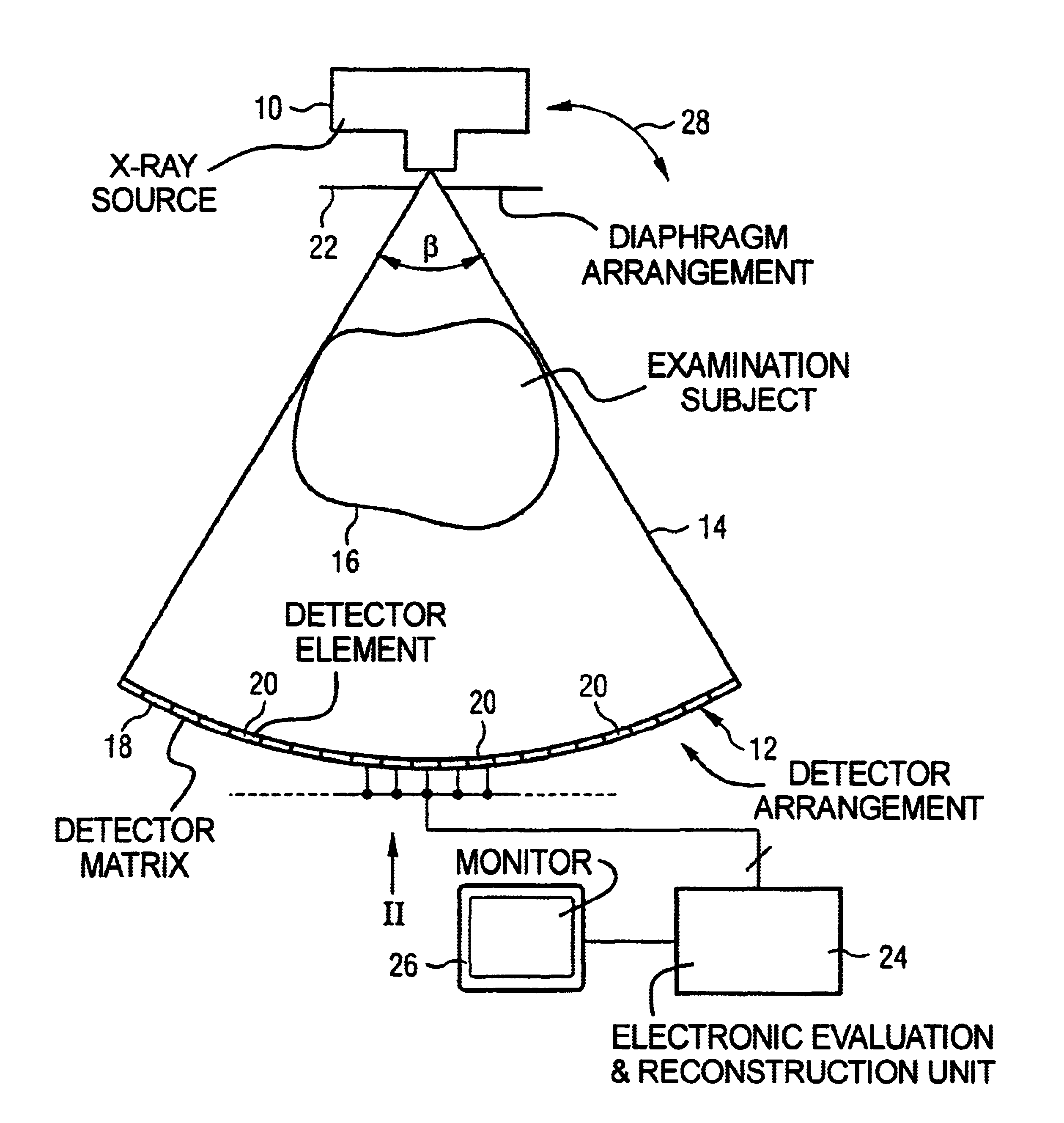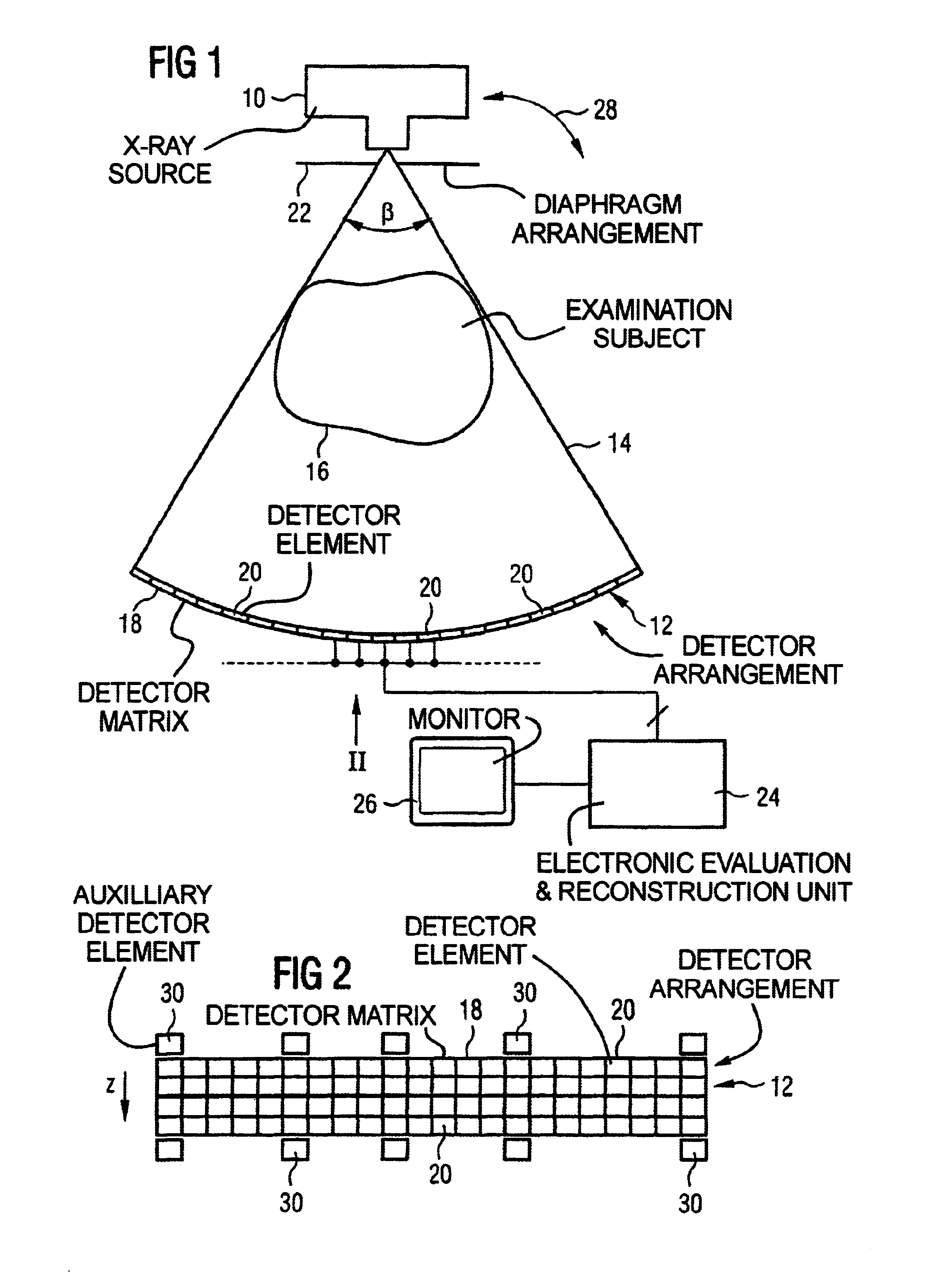Method for correcting stray radiation in an x-ray computed tomography scanner
a computed tomography and scanner technology, applied in tomography, image enhancement, instruments, etc., can solve the problems of unsatisfactory image artifacts, misinterpretations of tomographic images, and grave consequences to the extent of endangering the life of patients
- Summary
- Abstract
- Description
- Claims
- Application Information
AI Technical Summary
Benefits of technology
Problems solved by technology
Method used
Image
Examples
Embodiment Construction
[0031]The CT scanner shown in the figures has an X-ray source 10 and a detector arrangement 12. The X-ray source 10 emits X-ray radiation in the shape of a fan, as indicated at 14. An object under examination 16 arranged in the beam path between the X-ray source 10 and the detector arrangement 12 is penetrated by the X-ray radiation. The detector arrangement 12 detects the X-ray radiation downstream of the object under examination 16. Specifically, the detector arrangement 12 has a detector matrix 18 composed of a multiplicity of detector elements 20 that are distributed over a number of adjacent rows and are arranged next to one another in each row in the direction of a fan angle β. Four such detector rows are shown as an example in FIG. 2; however, the number of the detector rows can differ therefrom as desired and can be 8, 16 or 24, instead, for example. The size of the beam fan 14 in the direction of the fan angle β can be set by means of a diaphragm arrangement 22 that is arra...
PUM
| Property | Measurement | Unit |
|---|---|---|
| depth | aaaaa | aaaaa |
| frequency | aaaaa | aaaaa |
| spatial frequency | aaaaa | aaaaa |
Abstract
Description
Claims
Application Information
 Login to View More
Login to View More - R&D
- Intellectual Property
- Life Sciences
- Materials
- Tech Scout
- Unparalleled Data Quality
- Higher Quality Content
- 60% Fewer Hallucinations
Browse by: Latest US Patents, China's latest patents, Technical Efficacy Thesaurus, Application Domain, Technology Topic, Popular Technical Reports.
© 2025 PatSnap. All rights reserved.Legal|Privacy policy|Modern Slavery Act Transparency Statement|Sitemap|About US| Contact US: help@patsnap.com



